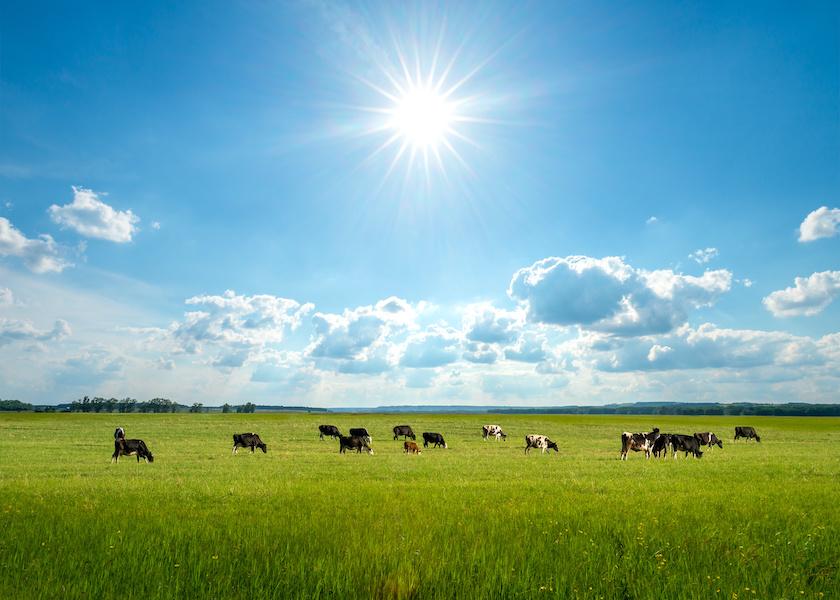A Summer of Uncertainty in Dairy Markets

High milk production, tepid domestic demand, faltering export sales, and a skittish weather market for feed commodities all are fueling nervous uncertainty for U.S. dairy producers.
The first half of Summer 2023 in dairy markets will be noted for breaking records, and not in a good way. According to dairy product merchants T.C. Jacoby, the USDA announced in late June the income over feed cost calculated in May as part of the Dairy Margin Coverage (DMC) program fell to $4.83/cwt., the lowest figure seen since the creation of that program. And on July 7, dry whey cratered at 22.75₵/lb., the lowest price ever seen in that market.
On the June 28 episode of the “Parlor to Plate” podcast from Ever.Ag, the theme for navigating the months ahead was discipline and patience. Analyst Jim Spainhour said the U.S. corn and soybean crops continue to teeter on the weatherman’s every word, and producers need to be very strategic to control feed costs in what will remain a highly volatile commodity market for the rest of the summer.
“Protect your upside and give yourself a ceiling in terms of how high your protein and grain expenditures might be,” he advised. “Utilize some strategies on the Exchange, while leaving some of that downside flexibility should we see a break.”
Dairy market analyst Kathleen Wolfley advised a similar strategy to protect producers from low milk prices using the Dairy Revenue Protection (DRP) Insurance program. “Lay in some floors, play some defense, and at least protect yourself from even lower prices,” she suggested. “Discipline and patience pay off.”
Wolfley said about 25% of the U.S. milk supply was protected by DRP insurance in the first quarter of 2023, with about 20% covered for Q2 and Q3.
Greg Steele, Senior Dairy Lending Specialist for Compeer Financial, said 2023 is shaping up to be a great example of the value of producers taking the long view with risk management. “Those who have risk management tools in place are enjoying a better margin right now, because of decisions they made 6-9 months ago when the market opportunities were much stronger than they are today,” he stated.
Steele went on to say that the U.S. dairy industry is entering a new era in which processors now have base programs in place, similar to a quota system. Based on their production history, dairies have limits on the allotment of milk they can sell the processor, with sharp penalties if they exceed those thresholds.
Another concerning development: processors reducing their number of patrons. Due to oversupply coupled with labor issues, processing capacity is maxed out in some parts of the country. That has led to cases of dumping milk, and some producers receiving notices that they have 30, 60, or 90 days to find a new processor.
“By the terms of the contracts they have, processors are giving patrons notice that they no longer have to take their milk,” shared Steele. “We encourage producers to understand the relationship they have with their processor, take very good care of it, look at the contractual agreements they have in place, and explore a Plan B of alternative options in the event their processor ends their relationship.”
Wolfley also emphasized it’s a critical time for producers to stay proactively engaged in their marketing decisions. “Hope is not a risk management strategy,” she advised.







